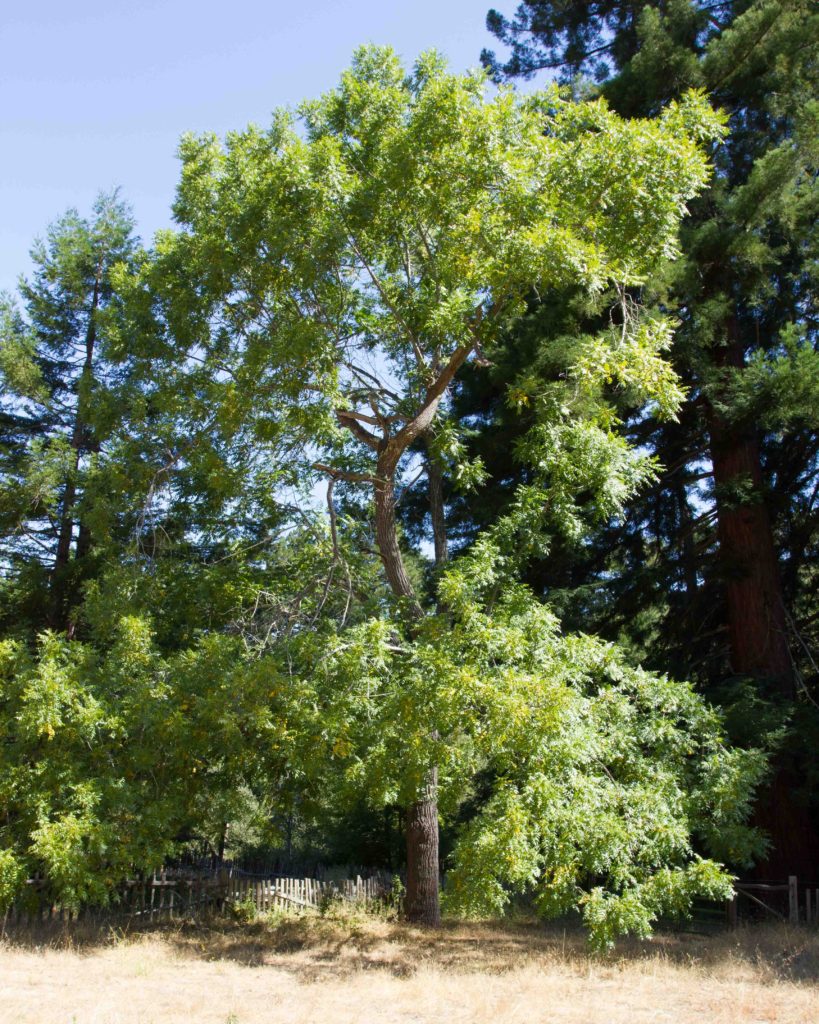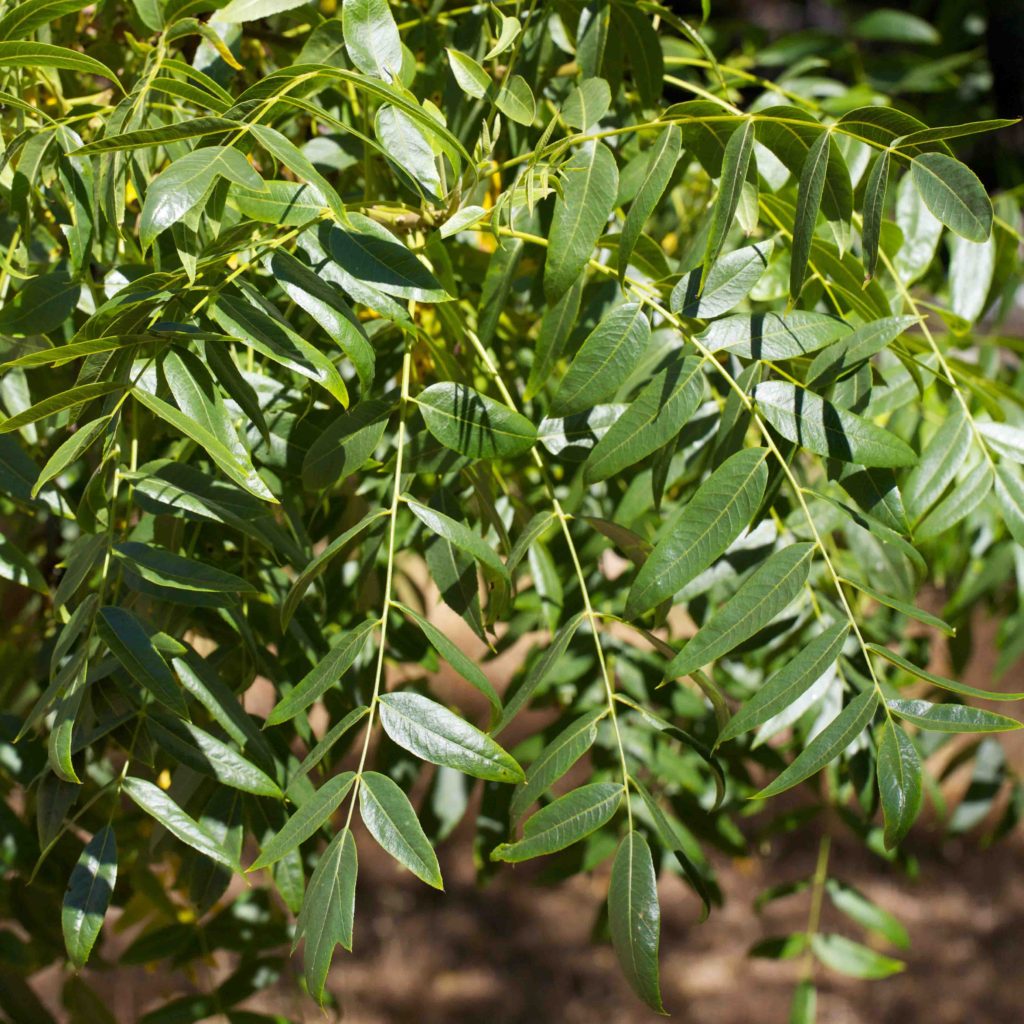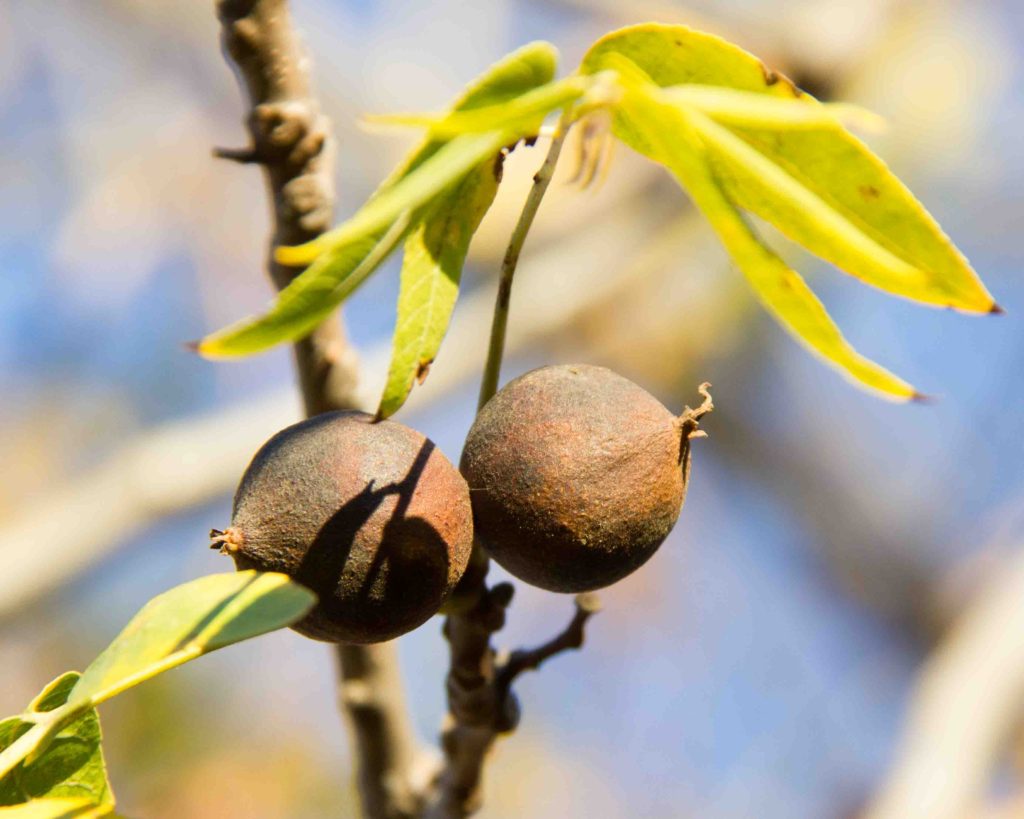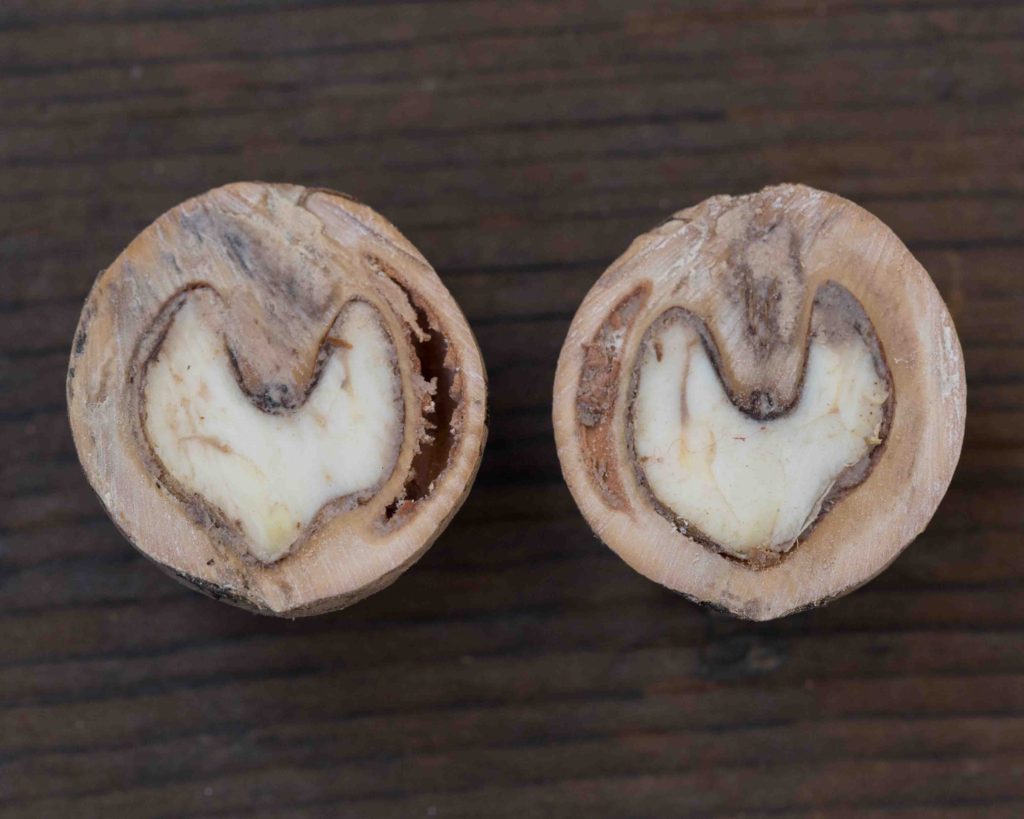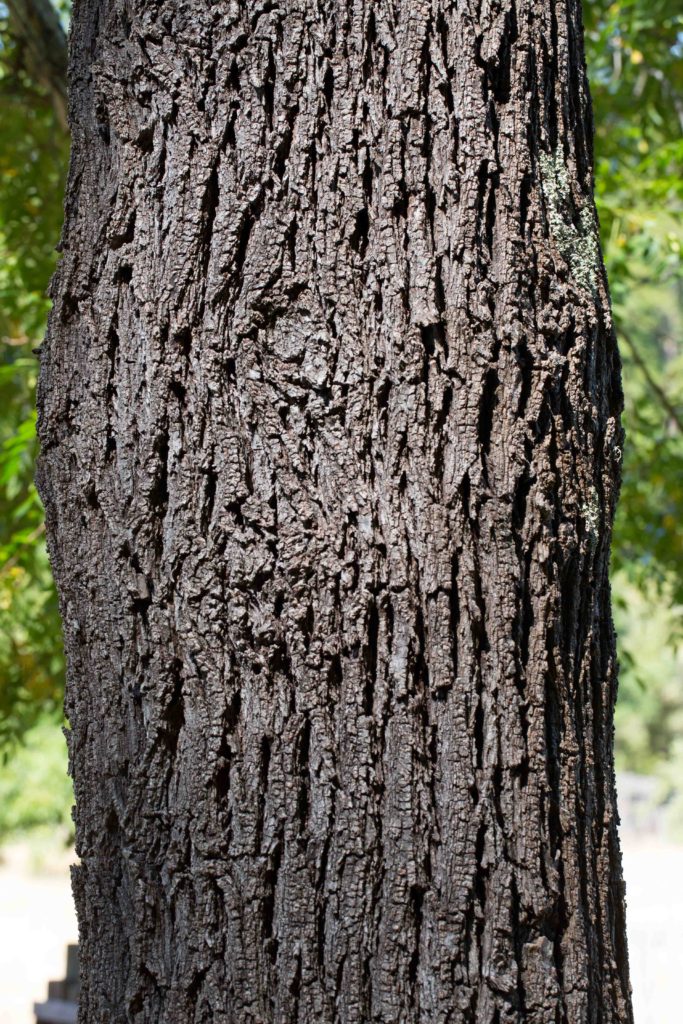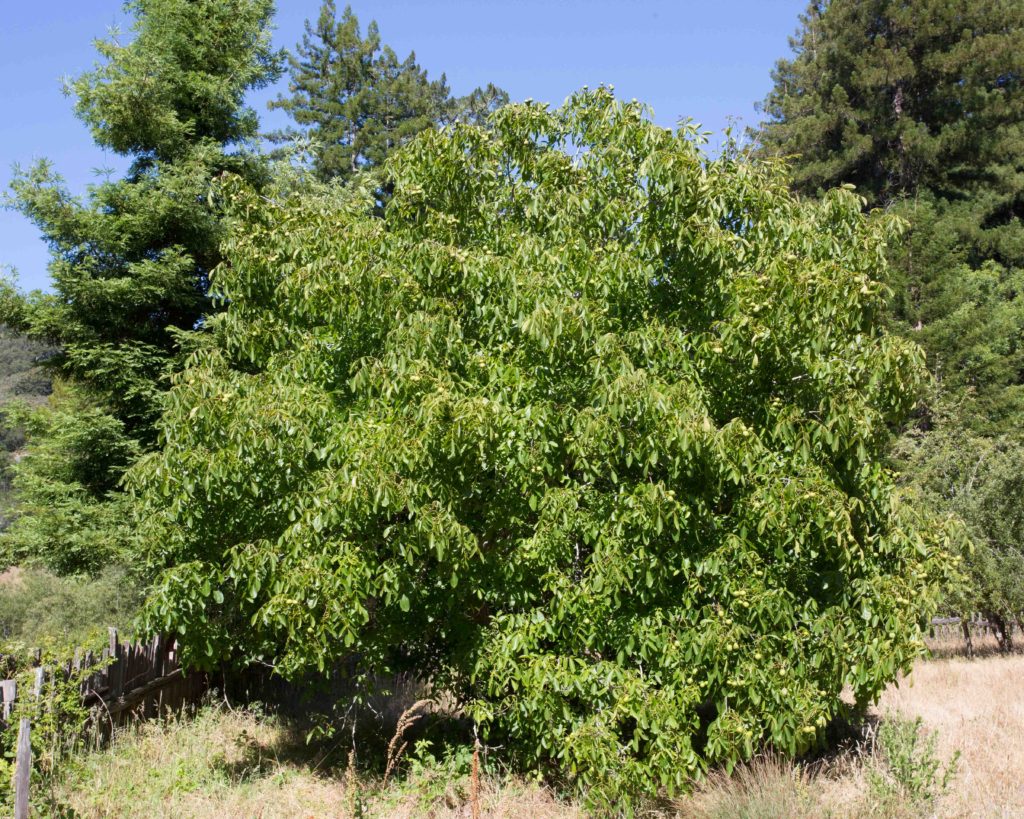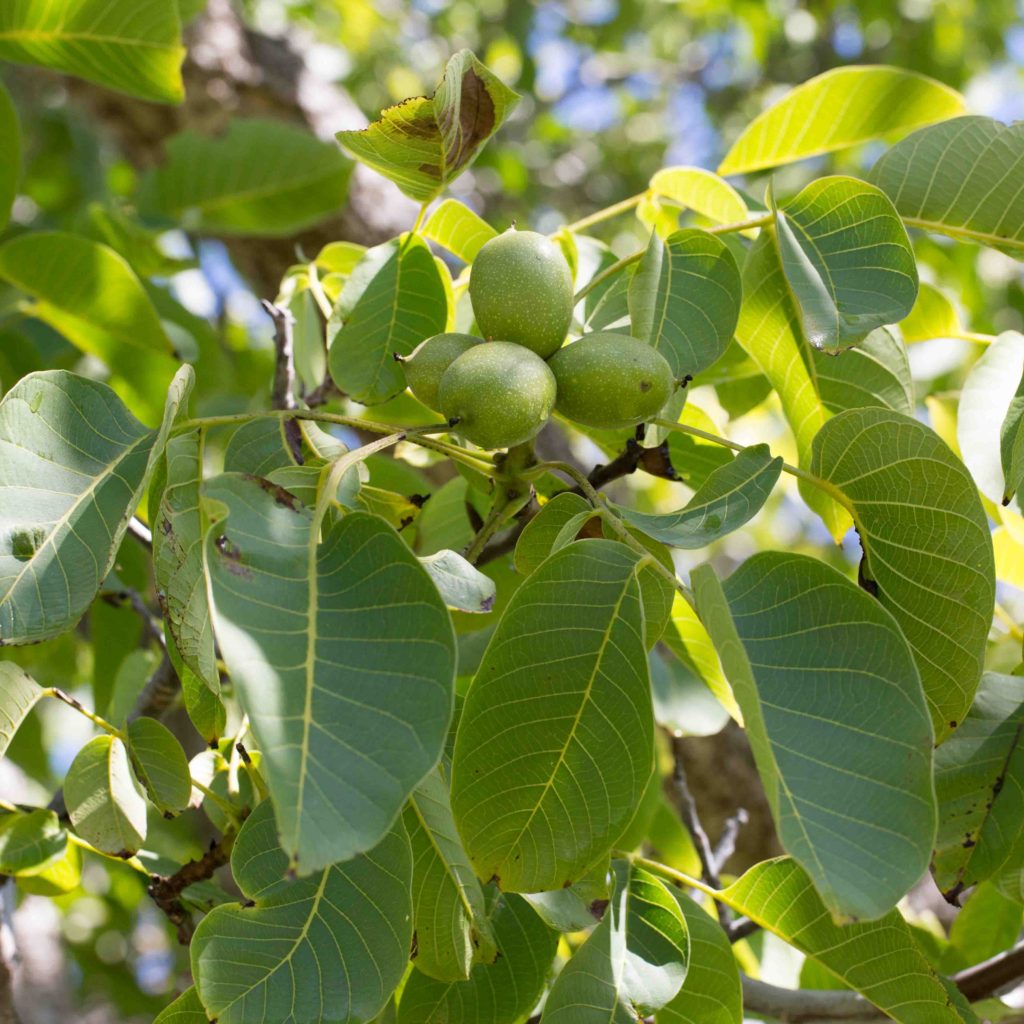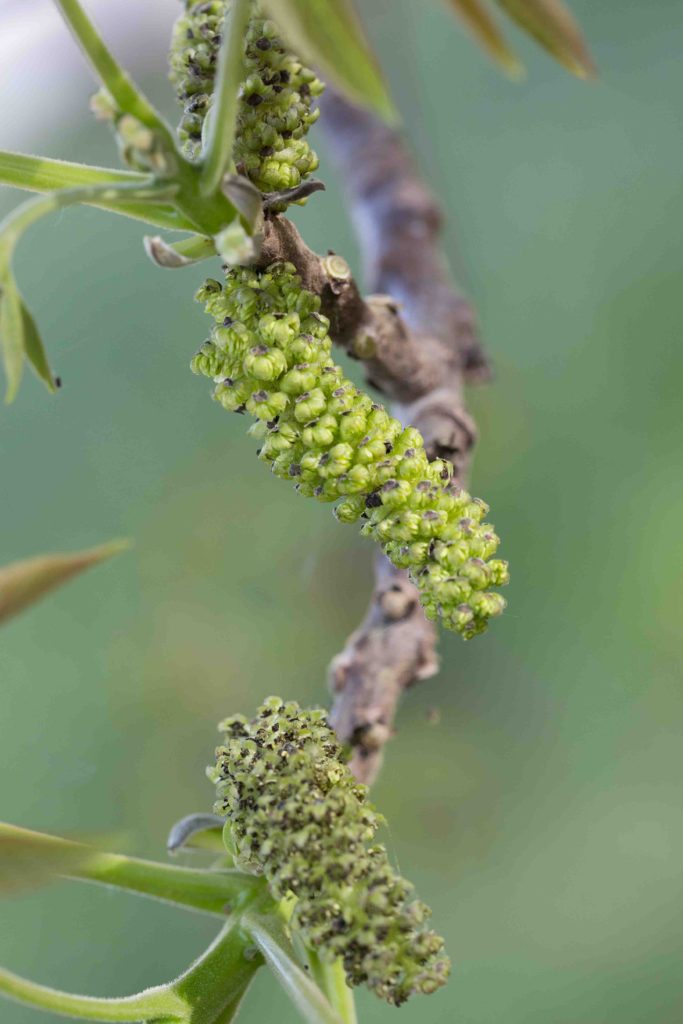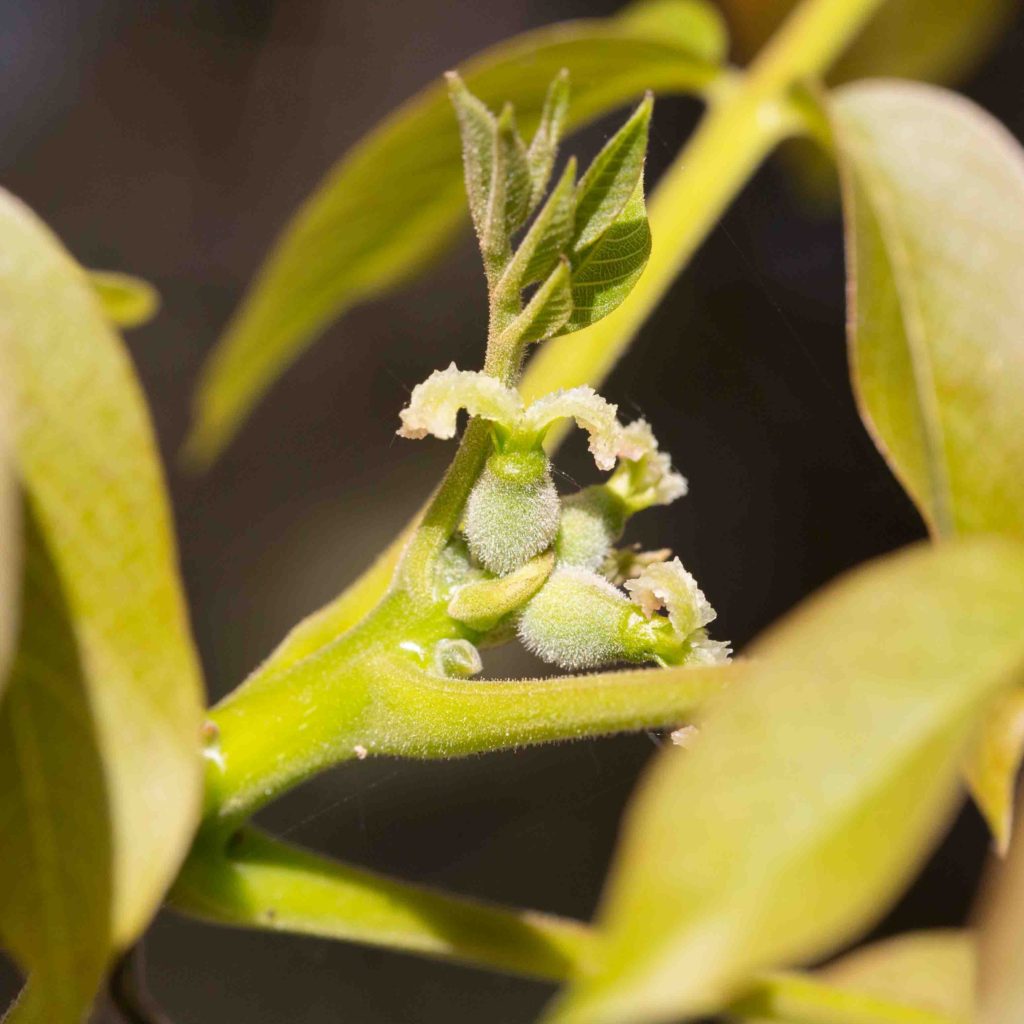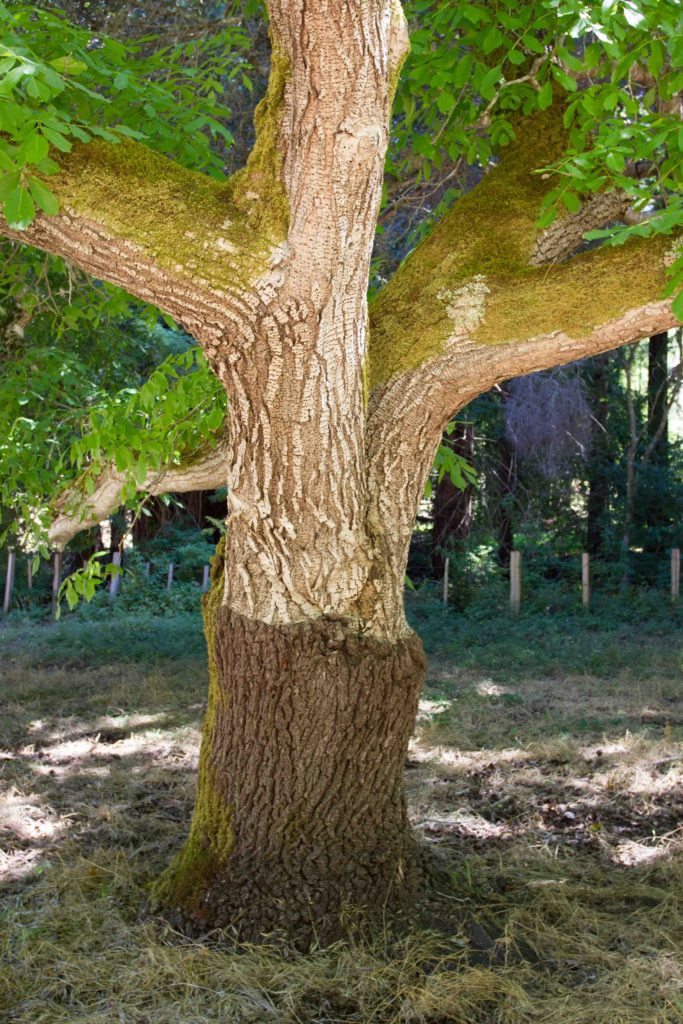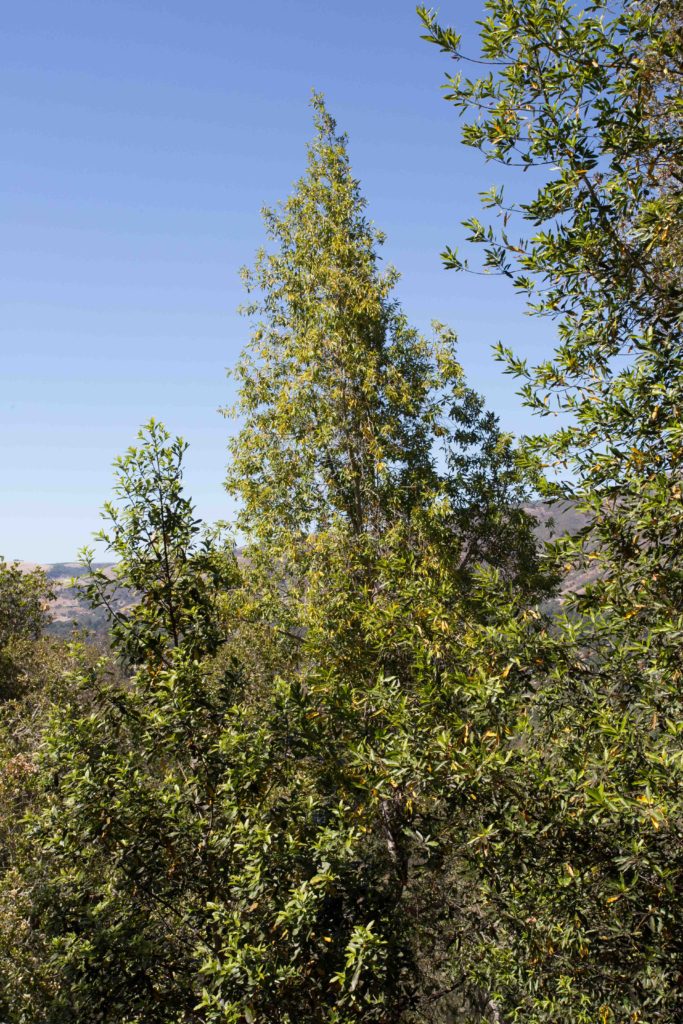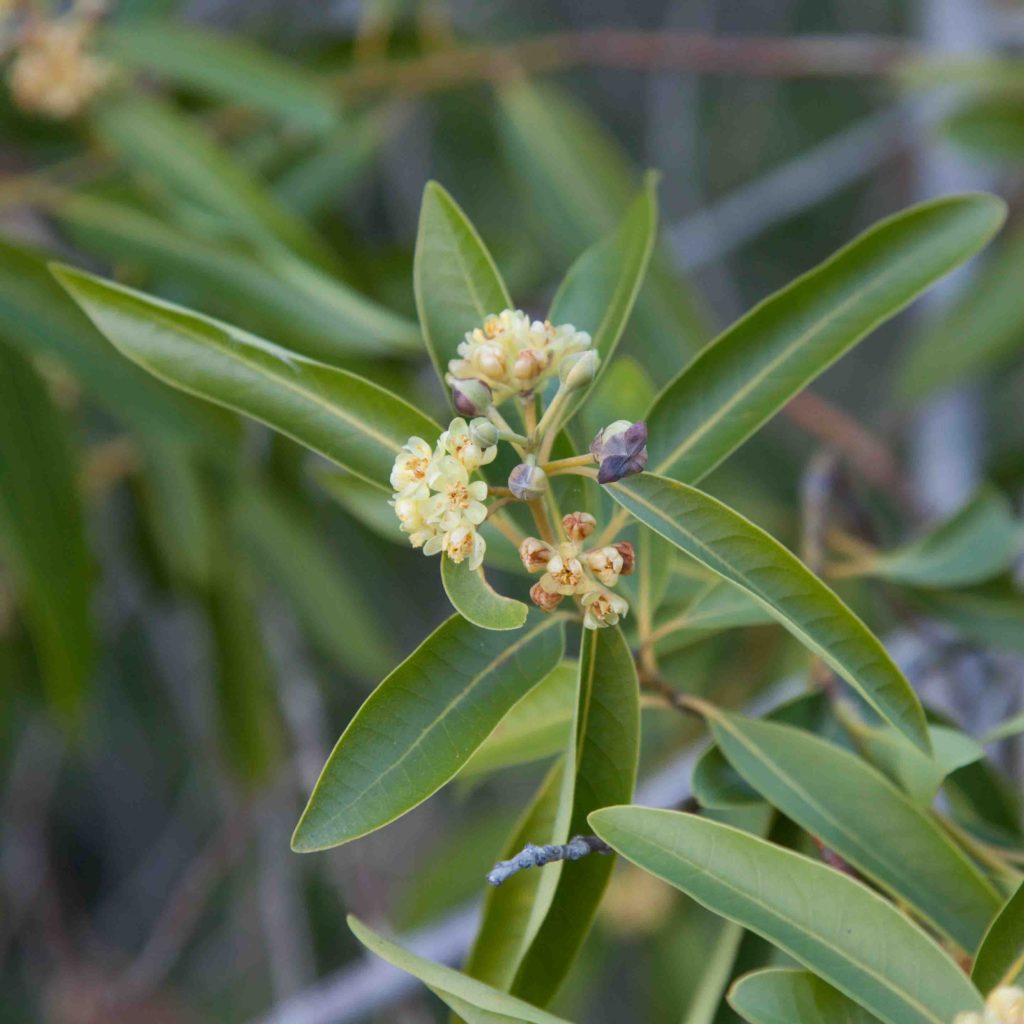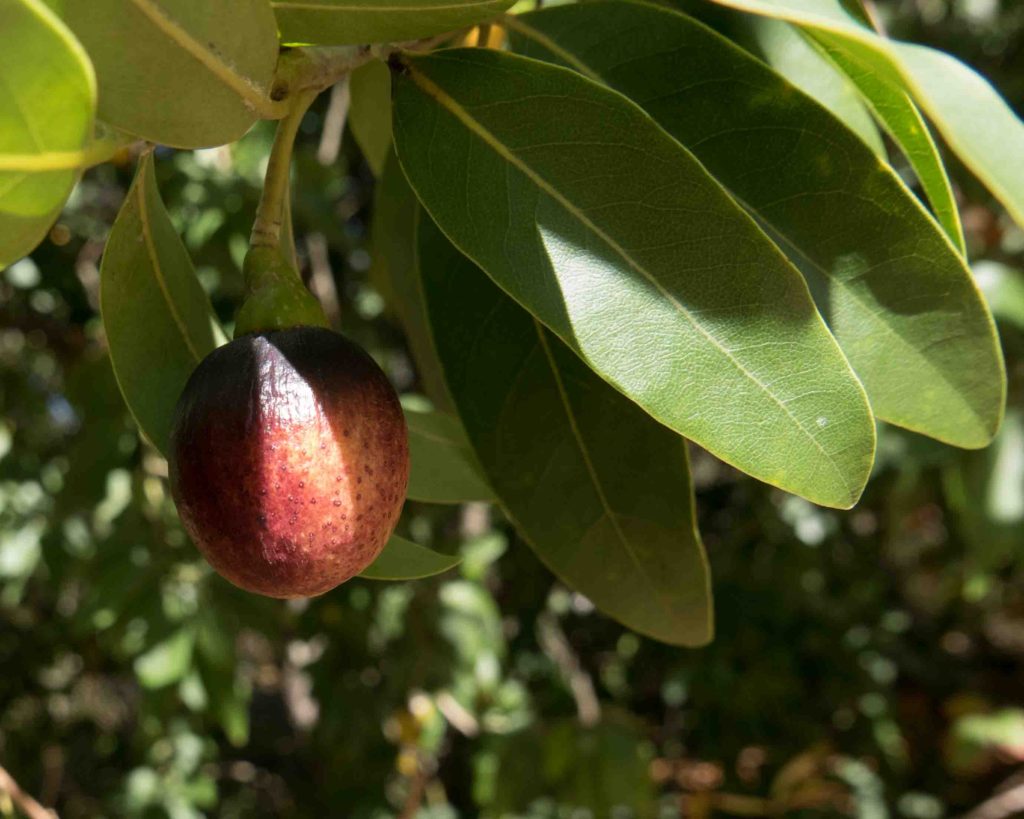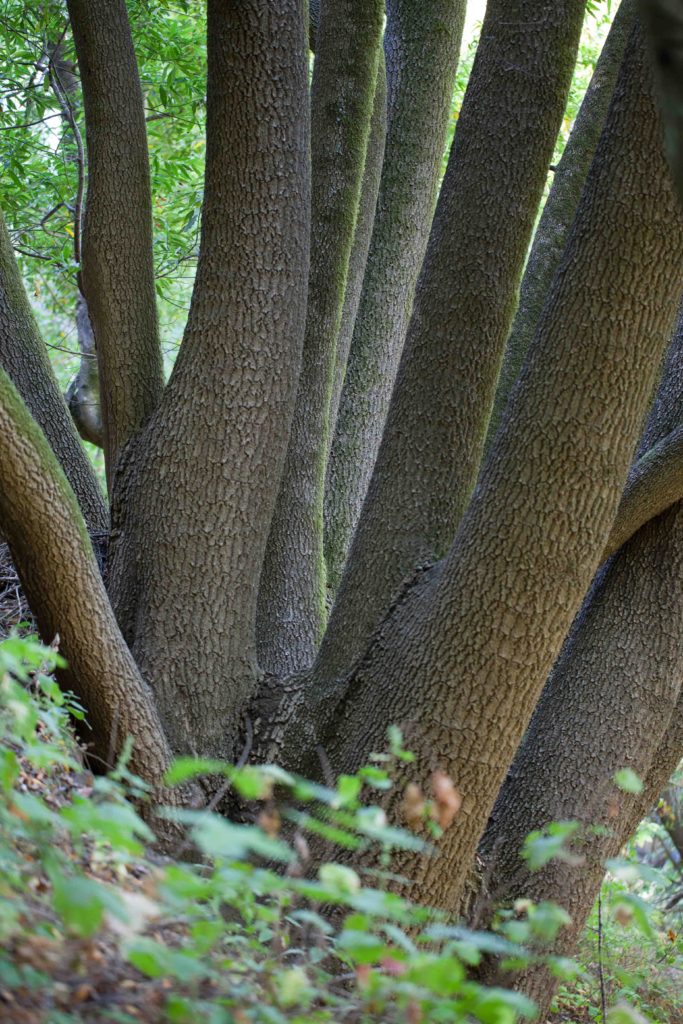Juglandaceae: Walnut Family & Lauraceae: Laurel Family
Northern California Walnut – Juglans hindsii
Height:
6–23 m
Habitat:
Along streams, disturbed slopes
Blooms:
Apr–May
Notes:
This is one of two native California walnuts. It forms a tall, slender tree, more open and less broad than the commonly cultivated English Walnut (Juglans regia, see below). Like all walnuts, it is deciduous. The leaves are pinnate, with 11–21 leaflets 7–13 cm long, narrowly triangular to lanceolate. This is easily distinguished from English Walnut by the overall shape, and the greater number of leaflets. The fruits are less valuable than English Walnuts, since they have much thicker shells and less meat. However, the tree is much more resistant to drought and pests. English Walnuts are commonly found grafted on to Northern California Walnut rootstock. The bark of the two trees is quite different, Northern California Walnut having darker bark with narrower striations.
English Walnut – Juglans regia
Height:
20–35 m
Habitat:
[Introduced]
Blooms:
Mar–Apr
Notes:
This tree is widely cultivated, and occasionally naturalized. It is prized for its nuts, which are superior to the nuts of Northern California Walnut (Juglans hindsii, see above), since they have thinner shells and more meat. The leaves are pinnate, with 5–11 leaflets 10–18 cm long, and elliptic to broadly lanceolate in shape. Like all walnuts, the tree is monoecious. The male flowers are in pendent, elongated clusters, and the inconspicuous female flowers are at the tips of new twigs. The bark of the tree is comparatively pale in color, and becomes furrowed with age. It is often pockmarked with holes made by Sapsuckers or Woodpeckers. The tree is frequently grafted on to Northern California Walnut rootstock to gain greater resistance to drought and certain pests (clearly visible in photo on right).
California Bay / Bay Laurel – Umbellularia californica
Height:
< 45 m
Habitat:
Canyons, valleys & chaparral
Blooms:
Nov–May
Notes:
This is a very common tree. It is easily recognized by its highly aromatic leaves, which are deep yellow-green and oblong-lanceolate. It may have multiple trunks. It can grow into a massive tree; one specimen near Corona Peak has a trunk that is almost 4 m in diameter. Flowers are small, creamy yellowish-green, borne in small umbels. The fruit is a drupe, green when young and purplish when mature. Unfortunately, California Bay is a notorious hosts of the pathogen Phytophthora ramorum, which gives rise to Sudden Oak Death. The tree itself is only mildly affected by the pathogen. But, when infected, it is capable of spreading the pathogen, with potentially lethal consequences to any oak tree within 100 m.
